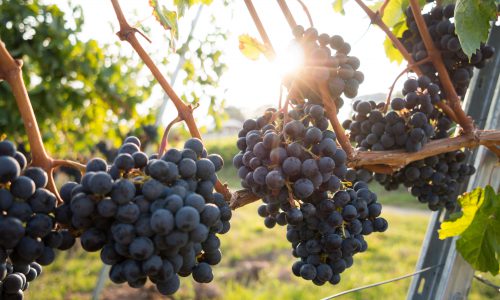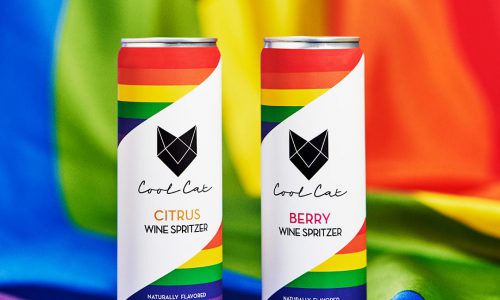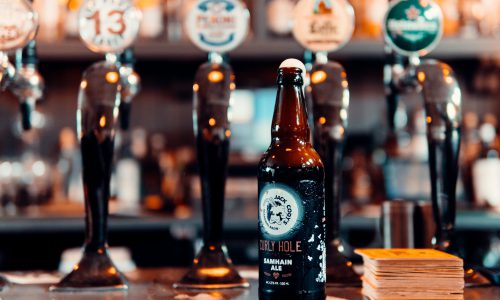What happens when you create a brand from scratch, resurrect an old one, and acquire one with a namesake in pop culture? With a diverse portfolio of offerings, coupled with a team of passionate, collaborative brand builders, Grain & Barrel Spirits is quickly becoming one of the most innovative emerging spirits companies in the industry.
“Each brand is unique, just as every category is unique,” the company’s founder and CEO Matti Anttila told ForceBrands exclusively. “We tend to be category agnostic. At the end of the day, it’s about identifying a consumer need and filling it with a compelling brand proposition.”
We caught up with Anttila to learn more about the craft spirits industry, what differentiates their products, and more.
ForceBrands: You have a very entrepreneurial background. What inspired you to join the industry and helm Grain & Barrel Spirits?
Matti Anttila: I started my first brand in my mid-20s after working in investment banking at J.P. Morgan. While I liked aspects of banking, I really wanted to create something tangible. At the time, I was working in Brazil and came up with the idea to create the first super-premium cachaça (Brazil’s national spirit) with a primary focus on selling it in the U.S. market. I didn’t know much about the industry, but that was part of the excitement. While the cachaça category never took off, 14 years later I’m still in the industry and have been successful in building a portfolio of differentiated, on-trend brands.
FB: One of the highlights in Grain & Barrel Spirits’ portfolio is Dixie vodka, which has become one of the fastest-growing spirit brands in the U.S. There’s a notable shift among consumers from premium imported vodkas to domestic spirits. How is Dixie disrupting this space and leading this movement?
MA: What started in beer is now clearly a trend in spirits — the shift from large, global brands to independent, “craft” brands. The vodka category, which makes up one-third of all spirits in the U.S., has really been affected by this. After the downturn, consumers started looking for an American vodka option and ultimately found Tito’s, which was in the right place at the right time. Tito’s helped spur the move away from the imported vodka brands that had dominated the category for years. In the process, a true American vodka category was created. Dixie has helped take that one step further, tapping into the consumer desire to adopt brands that are closer to home. First and foremost, Dixie is an all-American brand. Second, it’s Southern. Whether you are in Charleston, Baton Rouge or anywhere in between, it’s a brand you can call your own. We’ve really cultivated that via our Flavors of the South strategy, where we source ingredients from specific partner farms and help tell their stories through our packaging and marketing, while they help tell ours through their marketing. As it travels outside the south, it brings with it the heritage of hospitality and flavors that the south is so well known for. Tapping into these trends and the overall positive perception of the emerging, “new” south, particularly around craft products, Dixie has been able to rapidly win over new consumers not just from imports, but also from the larger domestic players.
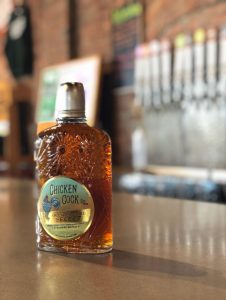 FB: Grain & Barrel Spirits has a diverse portfolio: You created Dixie from scratch, you resurrected an older pre-prohibition brand Chicken Cock, and acquired the rum brand Endless Summer. How do you approach brand development?
FB: Grain & Barrel Spirits has a diverse portfolio: You created Dixie from scratch, you resurrected an older pre-prohibition brand Chicken Cock, and acquired the rum brand Endless Summer. How do you approach brand development?
MA: Each brand is unique, just as every category is unique. We tend to be category agnostic. At the end of the day, it’s about identifying a consumer need and filling it with a compelling brand proposition. In some categories, heritage really matters. Bourbon is one of those categories. Chicken Cock’s story is rare, from its roots back to 1856, to its fame as a go-to whiskey at speakeasies like the Cotton Club during Prohibition. As soon as I discovered that history I knew the brand deserved to be brought back to life. Luckily that coincided with a bourbon resurgence. There aren’t many brands with Chicken Cock’s history, so we were lucky to rediscover it before anyone else did.
In the case of Dixie, we saw a shift to regional and local and saw significant white space in a category that most people were ignoring. In that case, we knew we would have to create something from the ground up. That’s a fun process, but it’s still a process. The brand today has evolved over the last five years as we’ve nurtured it, learned what resonates, discovered its voice, etc. The third strategy we look at is acquisition. We can’t compete with the big guys to buy large, established brands, nor would that really fit with our DNA. So we tend to be opportunistic, but very few deals really catch our attention.
Endless Summer is an example of a bit of a hybrid acquisition since we acquired intellectual property, via the exclusive global license in spirits to the iconic surf film “The Endless Summer.” We knew we wanted to do something in rum, but couldn’t find a compelling brand out there to acquire or an idea to create something from scratch that really checked off all the boxes. We decided to borrow equity via a licensing deal. It’s still early days for Endless Summer, but it’s a powerful brand that once it finds the right product and market fit, should be something special.
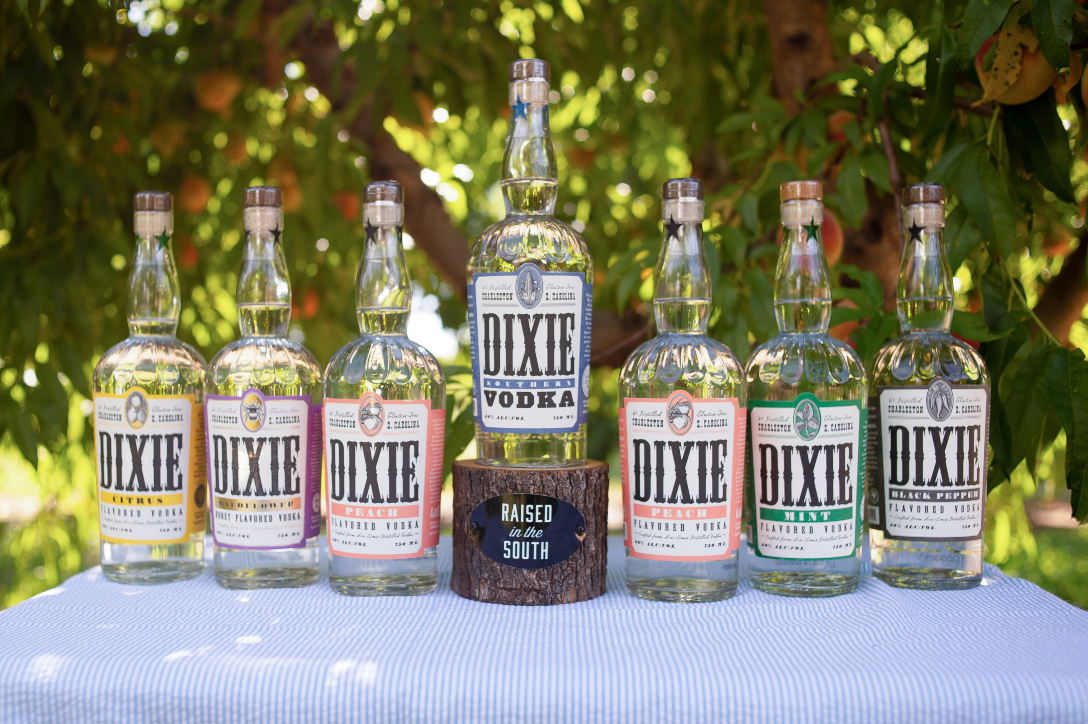
FB: You talk a lot about partnership and collaboration; how have these relationships helped contribute to the success of the brands within Grain & Barrel Spirits?
MA: We are an independent company without the financial or human resources of the big, global players. While a brand like Dixie is becoming a force to be reckoned with in our core markets, we still are a small (yet scrappy and growing) player overall. That forces us to be creative. One key way we do that is with collaborative partners. We made the decision early on with Dixie that we would source all ingredients from the Southeast. As those relationships developed, we started to see clear overlap between our mutual stories. For example, Lane Southern Orchards, our peach partner, tells a very authentic, local story, but to a national audience. They aren’t just selling Georgia peaches to Georgians, they are selling the benefits of Georgia peaches to all American consumers interested in peaches. Our partners are proud of what they do, just as we are proud of what we do. We highlight each other and that allows our respective brand messages to resonate more broadly. We go so far as to tell each partners story directly on our label. That helps our partners, but also allows the consumer to better understand where we come from and then hopefully share that story with others.
Authenticity has always been critical, but it’s especially important today. Collaboration isn’t new, but today we have the ability to highlight collaboration and partnerships as a useful marketing tool more than ever.
For us, this extends from supply chain, including our participation in Bardstown Bourbon Company’s collaborative distilling program, to our support of Charleston-based The Bee Cause as part of our membership in 1% for the Planet. Collectively, our voices are larger and our impact greater.
FB: What have been some of the more challenging aspects of brand building in today’s incredibly competitive market and how have you overcome them?
MA: Like any emerging CPG company, competing for shelf space and attention is tough. We don’t have a bazooka, so we need to be more focused and crafty. A particular challenge in spirits is that there really isn’t a viable DTC channel. We feel like we are very good at building compelling brand propositions that deserve to exist. The next challenge is getting those brands to the market. Our distributor partners are great, but given significant wholesaler consolidation, they have a lot of brands. We need to be able to break through that clutter. The primary way we’ve done this is by going very narrow and deep, one market at a time. Dixie is doing 50,000 9L cases in just nine markets and that’s by design. While we will be expanding the brand significantly over the next 12 months, we’ve had to own our core first. By doing so we’ve been able to build localized strength, which in turn gets us more attention from our distributor, retailer, and on-premise partners. Trying to do too much too soon is what kills a lot of brands.
FB: At ForceBrands, we know a great company is only as great as the people you hire. How have you approached hiring and what do you look for in key hires?
MA: Team is obviously critical, especially in a small, entrepreneurial company. Everyone needs to be excited about the prospect of really building something. Things can change and evolve quickly. We’re a cutter, not an aircraft carrier. That’s not an environment everyone is ideally suited for. Identifying that in the hiring process is critical. Weaknesses are amplified, but so are strengths. Every single one of our employees is a critical component to the success of each brand and the company as a whole. That’s not necessarily the case in big companies. That’s exciting to some people and those are the people we want on our team.
FB: What excites you most about the future of the Grain & Barrel Spirits portfolio? Are there any new product launches or innovations you could share?
MA: Craft, however you want to define it, will continue to grow as a trend in our industry. I think G&B is perfectly positioned to take advantage of that. Our primary objective is to continue to support the exciting growth of Dixie as it emerges into a national brand. In 14 years in the industry, I’ve had the privilege of working on a number of great brands, but Dixie is uniquely special. It truly resonates with consumers and the message is dialed-in. Beyond Dixie, we’re excited that the investment we’ve made in liquid for Chicken Cock is finally yielding enough high quality, aged product to allow the brand to scale. Luckily for Chicken Cock, having Dixie alongside it in the portfolio has allowed us to be patient. Now that patience is paying off. We just launched our first “everyday” Kentucky Straight Bourbon, which will be the tip of the spear for the brand as it expands into new markets and goes deeper in existing ones. From an innovation standpoint, we’re always coming up with ideas. Some will make it to market, others won’t, but the creative process fuels all aspects of the company.
Interested in working in the alcoholic beverage world? Explore our BevForce division.

